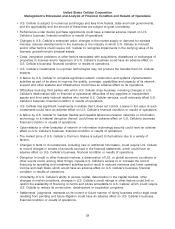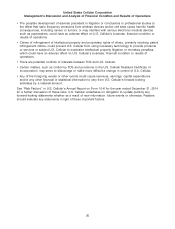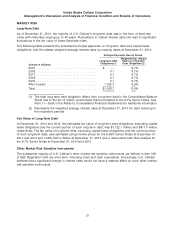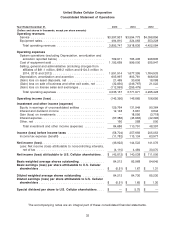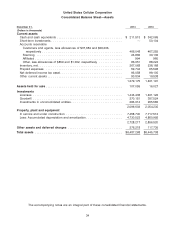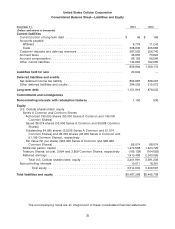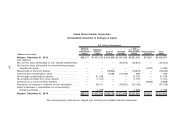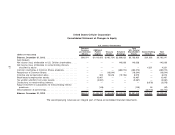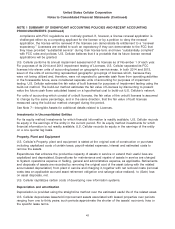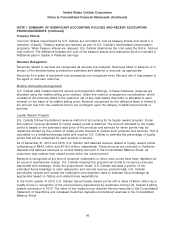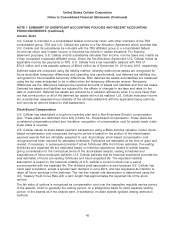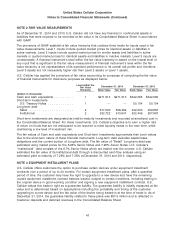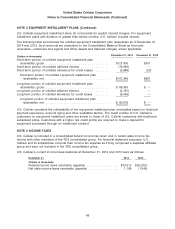US Cellular 2014 Annual Report Download - page 47
Download and view the complete annual report
Please find page 47 of the 2014 US Cellular annual report below. You can navigate through the pages in the report by either clicking on the pages listed below, or by using the keyword search tool below to find specific information within the annual report.United States Cellular Corporation
Notes to Consolidated Financial Statements
NOTE 1 SUMMARY OF SIGNIFICANT ACCOUNTING POLICIES AND RECENT ACCOUNTING
PRONOUNCEMENTS
United States Cellular Corporation (‘‘U.S. Cellular’’), a Delaware Corporation, is an 84%-owned subsidiary
of Telephone and Data Systems, Inc. (‘‘TDS’’).
Nature of Operations
U.S. Cellular owns, operates and invests in wireless systems throughout the United States. As of
December 31, 2014, U.S. Cellular served 4.8 million customers. U.S. Cellular has one reportable
segment.
Principles of Consolidation
The accounting policies of U.S. Cellular conform to accounting principles generally accepted in the
United States of America (‘‘GAAP’’) as set forth in the Financial Accounting Standards Board (‘‘FASB’’)
Accounting Standards Codification (‘‘ASC’’). Unless otherwise specified, references to accounting
provisions and GAAP in these notes refer to the requirements of the FASB ASC. The consolidated
financial statements include the accounts of U.S. Cellular, its majority-owned subsidiaries, general
partnerships in which U.S. Cellular has a majority partnership interest and variable interest entities
(‘‘VIEs’’) in which U.S. Cellular is the primary beneficiary. Both VIE and primary beneficiary represent
terms defined by GAAP.
Intercompany accounts and transactions have been eliminated.
Reclassifications
Certain prior year amounts have been reclassified to conform to the 2014 financial statement
presentation. These reclassifications did not affect consolidated net income attributable to U.S. Cellular
shareholders, cash flows, assets, liabilities or equity for the years presented.
Use of Estimates
The preparation of consolidated financial statements in conformity with GAAP requires management to
make estimates and assumptions that affect (a) the reported amounts of assets and liabilities and
disclosure of contingent assets and liabilities at the date of the financial statements and (b) the reported
amounts of revenues and expenses during the reported period. Actual results could differ from those
estimates. Significant estimates are involved in accounting for goodwill and indefinite-lived intangible
assets, income taxes, the loyalty reward program and equipment installment plans.
Cash and Cash Equivalents
Cash and cash equivalents include cash and short-term, highly liquid investments with original maturities
of three months or less.
Accounts Receivable and Allowance for Doubtful Accounts
Accounts receivable consist primarily of amounts owed by customers for wireless services and
equipment sales, including sales of certain devices under equipment installment plans, by agents for
sales of equipment to them and by other wireless carriers whose customers have used U.S. Cellular’s
wireless systems.
The allowance for doubtful accounts is the best estimate of the amount of probable credit losses related
to existing billed and unbilled accounts receivable. The allowance is estimated based on historical
experience, account aging and other factors that could affect collectability. Accounts receivable balances
are reviewed on either an aggregate or individual basis for collectability depending on the type of
39


